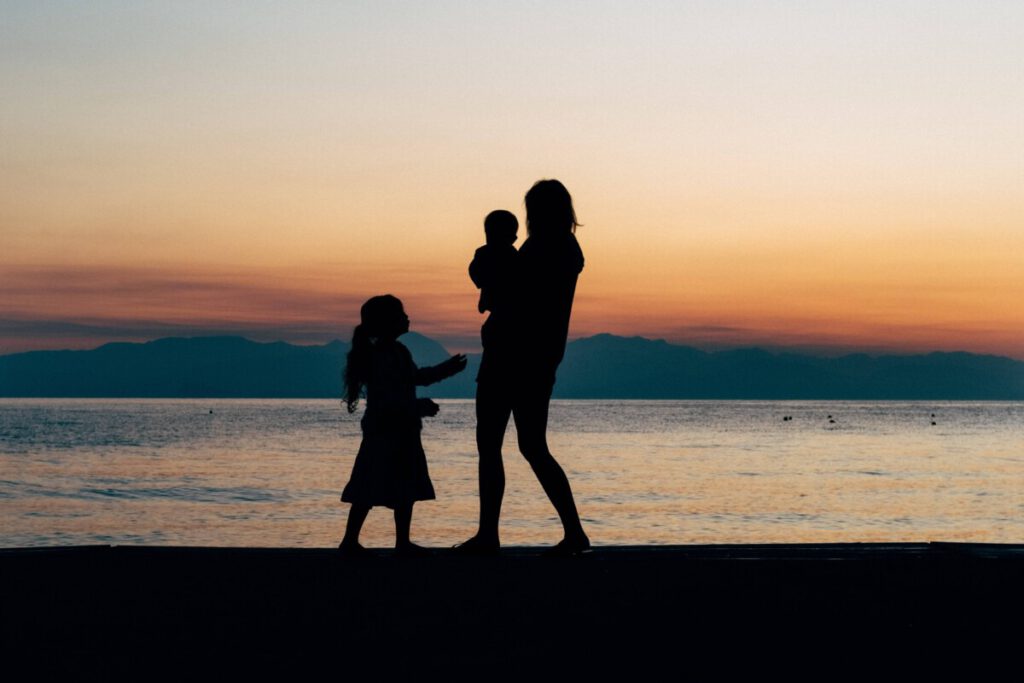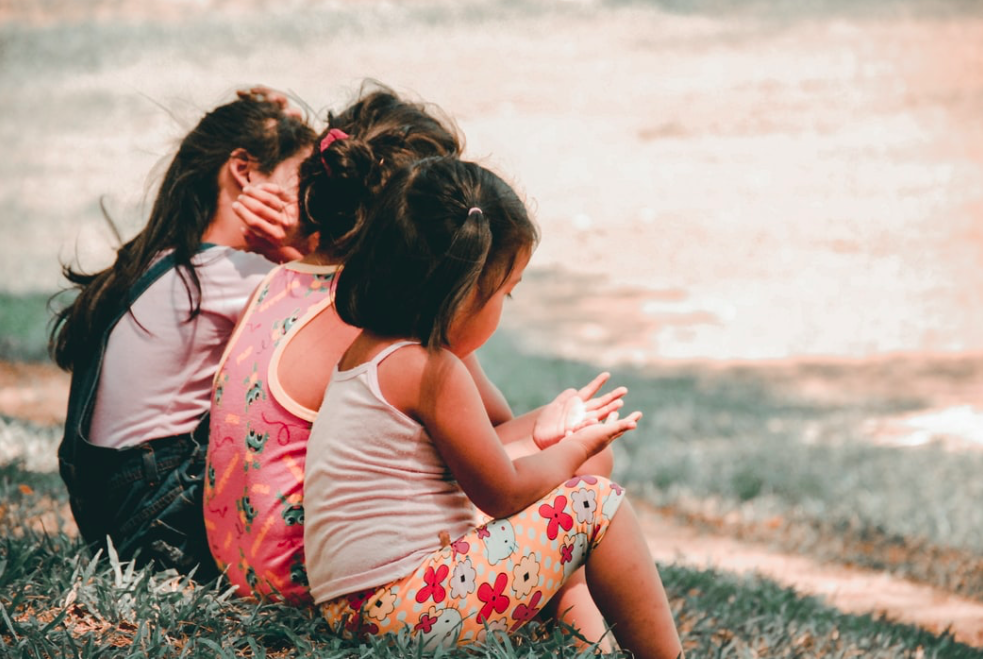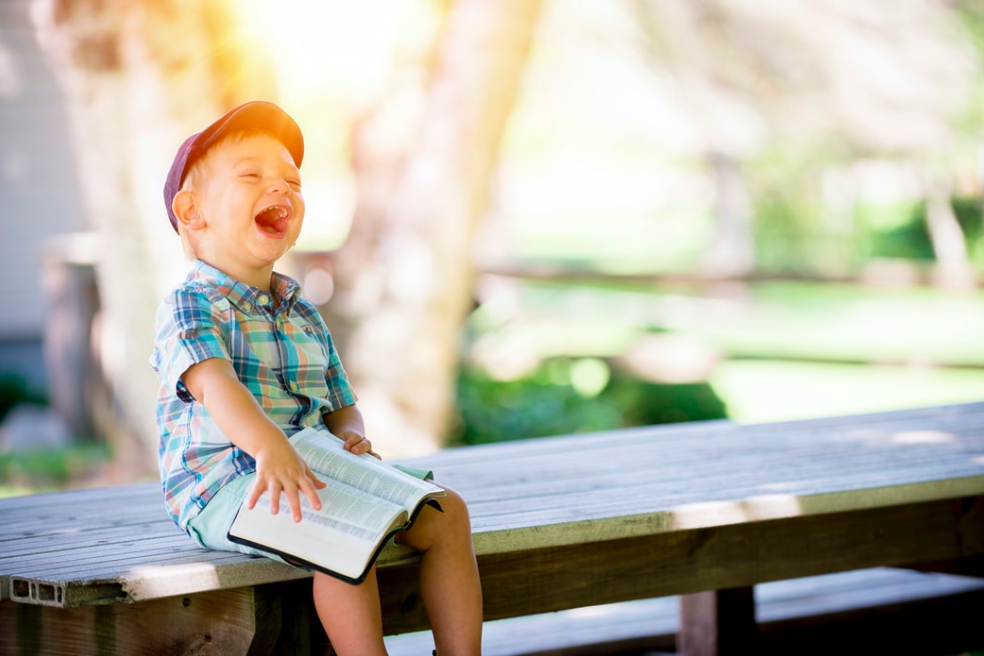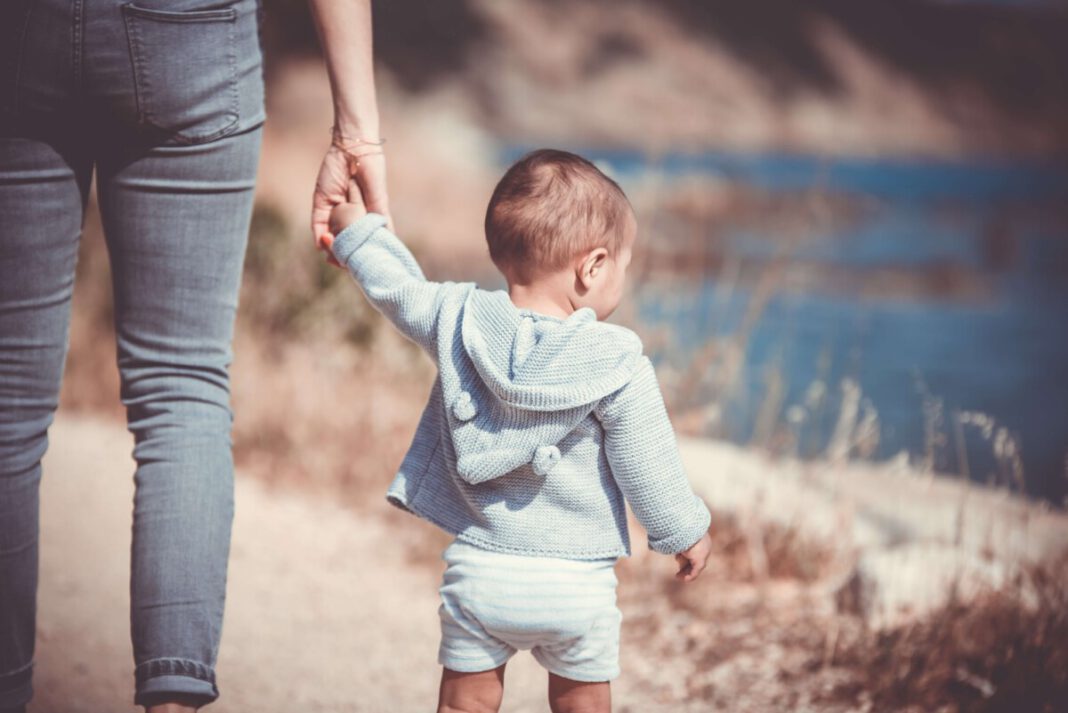Since 1956, when adoption became a legal family form, 60,000 children have been adopted in the Netherlands. About two-thirds of those children come from abroad. In 1993 the Netherlands was one of the original 66 countries that signed the Hague Adoption Convention, which is currently ratified by 95 countries. Adoption can be a difficult process, but the reward is something beautiful – a family.
In today’s world, in which the climate crisis occupies the thoughts of many, some young people are questioning whether they want to bring children into such an uncertain world. Some of these people are opting for adoption. Furthermore, for families where having a (second) child is (medically) not possible, in many cases adoption becomes an option.

What is adoption and how does it work in the Netherlands?
Adoption is legally taking in another’s child and raising them as one’s own. Most people adopt children because they can’t give birth themselves due to medical reasons, and others adopt children for idealistic reasons. There are four different forms of adoption: closed adoption, open adoption, foreign adoption and domestic adoption.
1. Closed adoption
Closed adoption means all ties and contacts between the child and the biological parents are completely broken. The data about the biological parents are stored in a file. This file is not accessible to the child without the permission of the biological parents.
2. Open adoption
With open adoptions, the biological parents continue to play an active role in the life of their child. For example, they have a voice in choosing the adoptive parents and they have regular contact with the child. Sometimes they even take care of part of the upbringing.
3. Foreign (international) adoption
Adoption of a child from abroad. The majority of children who are adopted in the Netherlands come from abroad.
4. Domestic adoption
In the Netherlands, very few children are offered for adoption every year. In most cases it concerns step-parent adoption. With step-parent adoption, the new partner of one of the parents adopts the child.
How to be eligible to adopt in the Netherlands
There are various conditions to qualify to adopt in the Netherlands. Some of these conditions are laid down in Dutch law. In the case of foreign adoption, various intermediary bodies (license holders) and the countries of origin also set their requirements. You also need a principle permission for adoption across borders. The basic permission says that according to the Dutch government you are eligible to adopt a child and this is issued by the Ministry of Justice.
Conditions for adopting a child from abroad
Most people who live in the Netherlands prefer to adopt children from abroad. This is actually the most popular form of adoption in the Netherlands, with Asia and Africa being the most popular continents. Below are some of the official conditions that apply in the Netherlands for the adoption of a child from abroad.
- You may not be older than 41 at the time of registration.
- Exceptions to the maximum age limit are possible for people aged 42 to 45 who are considered to be particularly suitable for caring for an adopted child aged 2 years or older.
- Married couples as well as cohabitants and individual applicants are eligible for adoption.
- Two men or two women may adopt a child from another country together. However, this is only possible if the country in question will allow a child to be adopted by a same-sex couple.
Note: The age difference between the oldest parent and the adopted child must not exceed 40 years. There are exceptions to this rule in the case of children with disabilities. You must be prepared to provide the child with all necessary medical treatments and vaccinations and you must guarantee all costs associated with the care of the child.
And in addition to the above conditions, you will also have to deal with the rules of the country of origin of the adopted child. For example, some countries do not allow adoption by one person and have different age limits.

Steps for adopting a child from abroad
An application for the adoption of a child from abroad is submitted through Foundation Adoption Service. This foundation also provides general information in the field of adoption to prospective adoptive parents, including the handing out of leaflets and the organisation of information evenings. The entire adoption procedure, from application to the child’s arrival in the family, can be broken down into nine steps. The adoption of a Dutch child goes through a court where the adoption request must also be submitted.
The nine steps for adopting a child from abroad are:
1. Submitting the application
The adoption procedure starts with the application for a principle permission. After registration you will receive a BKA (Foreign Child for Adoption) number. This BKA number determines the order in which applications are processed.
2. Admission to the adoption procedure
The Adoption Services Foundation tests whether you meet the conditions imposed, regarding civil status and age requirements.
3. Attend information meetings
The Foundation Adoption Services organises six meetings with the following themes: biological parents, child’s history, attachment, loss & grief and identity & loyalty. You have to attend all of them.
4. Family examination
The Child Protection Board conducts four conversations with the applicant (s) to view the family and living situation and to learn about the reasons for adoption. The council then draws up a report and advises the Minister of Justice about whether or not to grant the principle permission to the prospective adoptive parents.
5. Granting permission in principle
The Minister of Justice decides whether or not to grant a permission in principle on the basis of the family report and the advice of the Council for Child Protection. The basic permission is valid for three years and can possibly be extended for three years after additional family research.
6. Choice of mediation
The authorities that have a permit from the Ministry of Justice to mediate in international adoption are called permit holders. They can provide mediation throughout the whole process and look for the most suitable parents for a child who is eligible for adoption.
7. Adopted child proposal
This is the moment when you as prospective adoptive parents are finally told that a match may have been found between you and a child. You will receive information about the age and whether it concerns a boy or girl. Any medical details are also made known. You will have a reflection period before you have to decide on the proposal.
8. Arrival of the child in your family
And then the big moment when you get to meet your adopted child! You often have to pick up your adopted child yourself in the country of origin.
9. Registering your child
As soon as you arrive in the Netherlands with your adopted child, a few things have to be arranged here. For example, your child must be registered with the Population Department of the municipality in which you live.
Costs of adopting a child
The costs associated with adoption vary widely. The information provided by the Adoption Services Foundation costs €900.00 per application. The mediation costs depend, among other things, on the country of origin and the licenseholder. You should think of amounts between €7,500.00 and €22,700.00. These amounts include costs for the care of your adopted child from the time of proposals and medical examinations. The travel and accommodation costs to pick up your child are also included.
Popular (foreign) countries for adoption
Most adopted children in the Netherlands currently come from countries such as Brazil, Colombia, Haiti, Ethiopia, South Africa, Taiwan and China. There is also a small number of children from Poland, Hungary, Romania and India. The ages range from 0 to 6 years old.
Adopting a child in the Netherlands
Adoption of a Dutch child is not entirely possible if the biological parents still have “parental authority” over that child. However, judges may rule in favour of adoption in special cases like when a parent has been convicted of a serious crime against their child. In most cases, the judge may go for step-parent adoption. With step-parent adoption, the new partner of one of the parents adopts the child. This breaks the family bond with the other parent.

Conditions for adopting a child in the Netherlands
- The adoption must really be in the best interests of the child.
- Grandparents may not adopt their grandchildren.
- The prospective adoptive parents must be at least 18 years older than the child.
- You must have lived with your partner for at least three years.
- With step-parent adoption, you must have cared for the child for at least one year.
The difficulties that come with adoption
Of course, it is fantastic that couples who cannot have children can still have their wish for children fulfilled, and that children in abusive homes or orphanages are able to find a family, but adoption also comes with its own set of difficulties. The entire adoption process from start to finish is long and sometimes uncertain. Even when you can finally hold your adopted child in your arms, a lot can still happen. No matter how young the children are, they already carry a bit of history with them. It can get tricky when they realise they look “different” from their parents and there comes a time when you have to explain to them the reasons why. At a later age, children may start to feel the need to search for their ‘roots’ and possibly also for their biological parents. There are various agencies that offer help in the search for biological parents. FIOM – searching for family is one such agencies that can help you.
Want to offer up your child for adoption?
One of the biggest problems with pro-lifers, apart from always trying to police women’s bodies, is how their pro-life campaign stops as soon as the woman gives birth. For example, a pro-lifer will vigorously campaign against a woman who’s a drug addict getting an abortion, but will do nothing to cater for the child once she gives birth. Pro-lifers in politics and in power usually do nothing to make life easier or bearable for these poor children who did not ask to be born into a world where their parents are neither responsible nor capable of nurturing and providing them with safe, stable and healthy homes. In the Netherlands, you cannot formally renounce your own child, and abandoning a helpless child on the streets or with strangers is a criminal offence. If you do not want or cannot have custody of your own child, a judge has to decide what’s best for that child. There are some agencies that do help parents who want to give up their children. One of such an agency is FIOM.
FIOM
When a mother (or parents) decide to give up their own child, FIOM provides help and guidance to mother and child and the Child Protection Board supervises the entire procedure. A guardianship institution has temporary authority and the judge ultimately makes the decision. Giving up your own child isn’t an easy decision, so a mandatory reflection period of three months is given to the parents. The child is admitted to a foster home during this period. If the parents decide to take care of their child after the three months, reunification then takes place as quickly as possible. FIOM will then start looking at how the parent(s) can best take care of their child and offer them help where possible. Sometimes this can mean that the child is first admitted to a foster home until the parents are ready.
If after three months, the child is adopted by a family, the bond between the biological parents and the child is irrevocably broken. If you are considering giving up your child for adoption, it is wise to contact a FIOM agency. A social worker guides you and helps you sort things out. They provide emotional and practical support, because giving up your own child is something you carry with you for the rest of your life. FIOM also offers guidance after the adoption has been finalised and the bond has been broken with the child.
Combating illegal adoptions
Adoptions can help kids who are born into unstable families find nurturing and good homes and that is the most important reason why it should be taking place in the first instance. Children aren’t accessories and adoption shouldn’t be something you do just to feel good about yourself or for the “perfect family picture.”
The UN Special Rapporteur on the sale of children, child prostitution and child pornography, Maud de Boer-Buquicchio, in her latest report to the UN Human Rights Council said: “illegal adoptions constitute serious violations of the rights of the child, ranging from the arbitrary deprivation of identity to exploitation through sale. A major factor behind illegal adoptions is the financial gain that can be obtained from the procurement of children for adoption, in particular for intercountry adoption,” she said. “As long as adoption fees lack transparency and donations to countries of origin are linked to making children available for adoption, substantial incentives for illegal adoptions will continue to exist.”
Ms. Maud de Boer-Buquicchio is a Dutch national who was appointed by the Human Rights Council as Special Rapporteur on the sale of children, child prostitution and child pornography in May 2014. To learn more, visit: Special Rapporteur on the sale and sexual exploitation of children.
In the fight against illegal adoption, it is important that if you live in the Netherlands and would love to adopt children from abroad, especially from African and Asian countries, or countries in the Americas, please do that with agencies that work together with the UN. Do not take the short cut by paying child traffickers who intimidate local families into giving up their children or even kidnap them. Go through the right channels, no matter how long or uncertain it may all be, and make sure that when that adopted child walks into your arms, they didn’t get there through dubious means.
Wereldkind is an organisation that works together with locals in foreign countries and prospective adoptive parents in the Netherlands in finding safe and nurturing homes for children born into difficult ones in Africa, Asia, and the Americas. Wereldkind works with local organisations that prevent children from ending up on the streets or in a home. If for example, a child growing up within their own family is not possible, they look at the possibility of that child growing up in a local family. If that is not feasible, they mediate in international adoption, and this is where Dutch families become a good alternative. They see adoption as an international child protection measure, and this is why they are looking for suitable families in the Netherlands for children. Respect for the origin of a child, for the parents who give up the child and for the adoptive parents plays a very big role.
Are you adopted, and what do you think about adoption in the Netherlands? Have you ever adopted a child in the Netherlands or abroad? What was it like for you? Tell us in the comments.
Feature Image: Guillaume de Germain/Unsplash



Hello, my father was adopted in Holland, I will say in the early 60’s. Our grandparents never told us about it. The lived in Venezuela ( grandfather was consul of the netherlands in venezuela ). Unfortunately my father passed away these year. My brothers and I, are curious to know the origins of mu father past. I don’t know where to start. Found these site and I guess am starting a search. Thank you